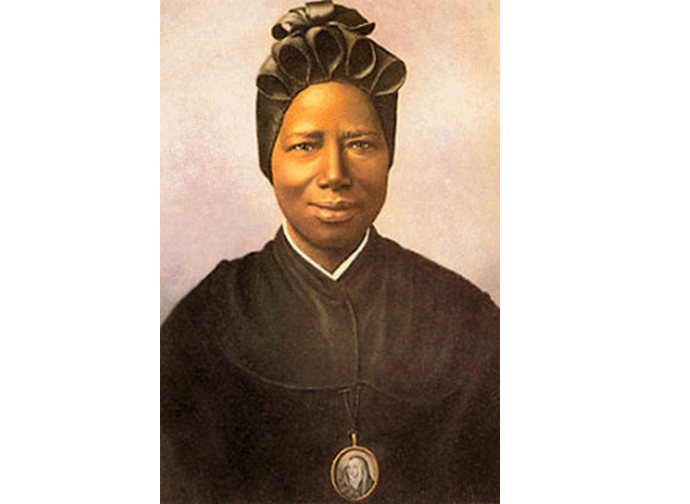Saint Josephine Bakhita
In the encyclical Spe Salvi, Benedict XVI draws on the life of Josephine Bakhita for a meditation on hope, a theological virtue that had entered powerfully in the life of the Sudanese Saint...

In the encyclical Spe Salvi, Benedict XVI draws on the life of Josephine Bakhita for a meditation on hope, a theological virtue that had entered powerfully in the life of the Sudanese Saint thanks to the knowledge of the true God. "By knowing this hope she was 'redeemed': she no longer saw herself as a slave but as a free daughter of God". That God whom she, already 'adopted' in Italy, was called with a saint's confidence, in the Venetian dialect, "el me Parón" ("my Master").
Bakhita had known plenty of masters of a different kind. She was born around 1869 in a village in Darfur, in the heart of Africa, and spent her early childhood peacefully, within a large family. But around the age of 9 she was kidnapped by two slave traders and, suffering a series of hardships, was passed from master to master until she was eventually purchased by a Turkish general, who proved to be the cruellest of all. One day she was subjected to the slave tattoo ritual: over a hundred razor cuts were etched on her body: 6 on her chest, 48 on her right arm and about sixty on her belly, the wounds were then sprinkled with salt. "How I felt, I can’t describe. I felt like I could die any moment ... ", she would recall later, as she dictated her diary – at the insistence of her sisters.
She was then bought by an Italian consular agent, Callisto Legnani. As she later said, he "loved me so much". As the Mahdist War intensified, the consul decided to return to Italy, and Bakhita pleaded to be allowed to follow him. Legnani [took her with him and] then donated her to the wife of a friend, Maria Turina Michieli, who was looking for a nanny for her little daughter. Two years later – in1888 – Mrs. Michieli left for a business trip to Sudan, while the young Bakhita and the little girl were entrusted to the Canossian Sisters of Venice, where the future Saint started her catechumenate. Thus Bakhita began to be gradually instructed by the nuns about "that God I felt in my heart since I was a child, without knowing who he was".
After her return from Sudan "about 9 months later, Mrs. Turina came to claim her rights over me. I refused to follow her to Africa because I hadn't completed my preparation for baptism". Despite her gentle character and her good feelings for the lady and the child, Bakhita was determined to stay with the nuns. Later, she would say: "It was the Lord who instilled in me such firmness, because he wanted to make me his own".
On January 9th, 1890 she received Baptism, Confirmation and First Communion. She was baptised as Josephine Mary Margaret Bakhita, the last one being the name given to her by her kidnappers, which means 'Lucky One'. On realising her religious vocation, three years later she began the noviciate at the Canossians' and made her vows on December 8th, 1896, in Verona. The new patriarch of Venice, Giuseppe Sarto (later Saint Pius X) had said to her: "Pronounce your holy vows without fear. Jesus wants you, Jesus loves you. Love him and always serve him like this".
In 1902 she was transferred to the Canossian convent of Schio, where she spent the last 45 years of her life, with few interruptions. She worked there as a cook, receptionist, embroiderer and, during the First World War, served as a nurse assistant in the military hospital set up inside the convent. Smiling, with a calm voice, speaking only in Venetian dialect, she would communicate, with few, simple words, trust in the goodness of God, combined with the certainty of being loved. She was also a sacristan, a service she liked very much because it allowed her to spend more time contemplating Jesus in the Tabernacle. The people of Schio and the girls staying at the Canossian institute used to call her "Madre Moretta". Her history spread throughout Italy. She harboured no grudge about the past. In fact, she said: "If I met those slave traders who kidnapped me and also those who tortured me, I would kneel to kiss their hands, because if this hadn't happened, now, I wouldn't be a Christian and a religious."
In her last few years she went through a painful illness, which she considered sharing in the sufferings of Jesus crucified. It was the Mother of the Lord that brought her comfort in her last moments, so that her final words, on February 8th, 1947, were: "How happy I am... Our Lady! Our Lady!"




